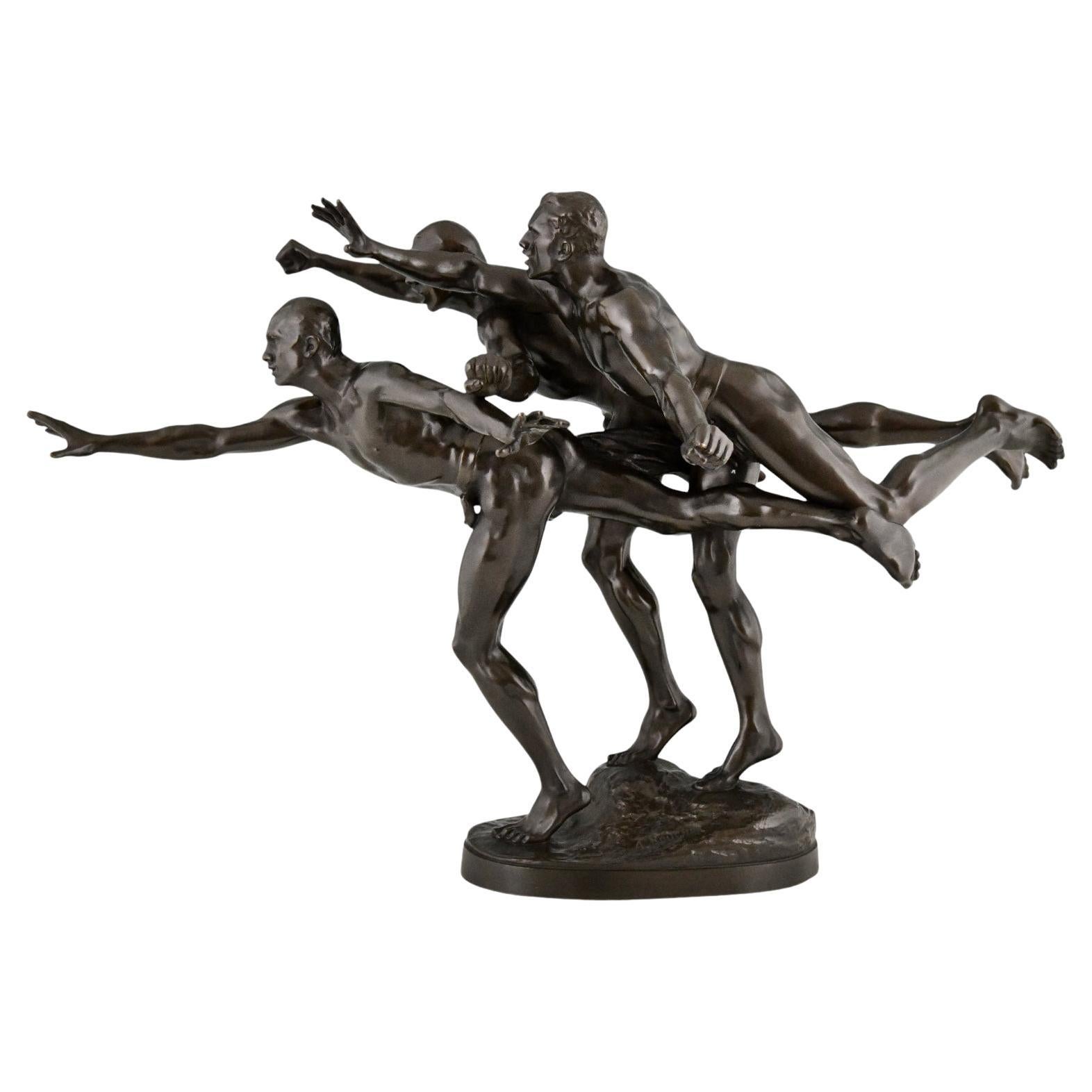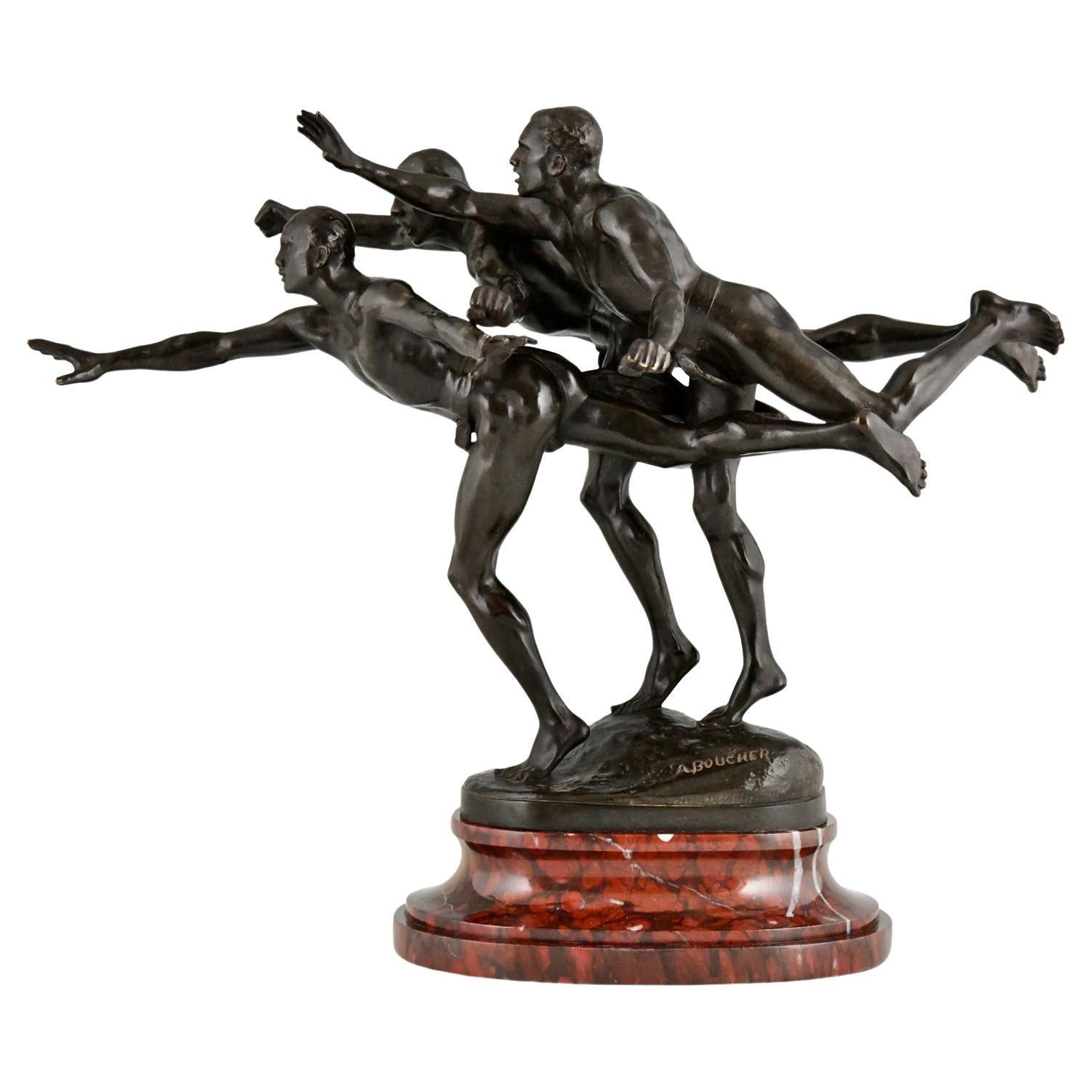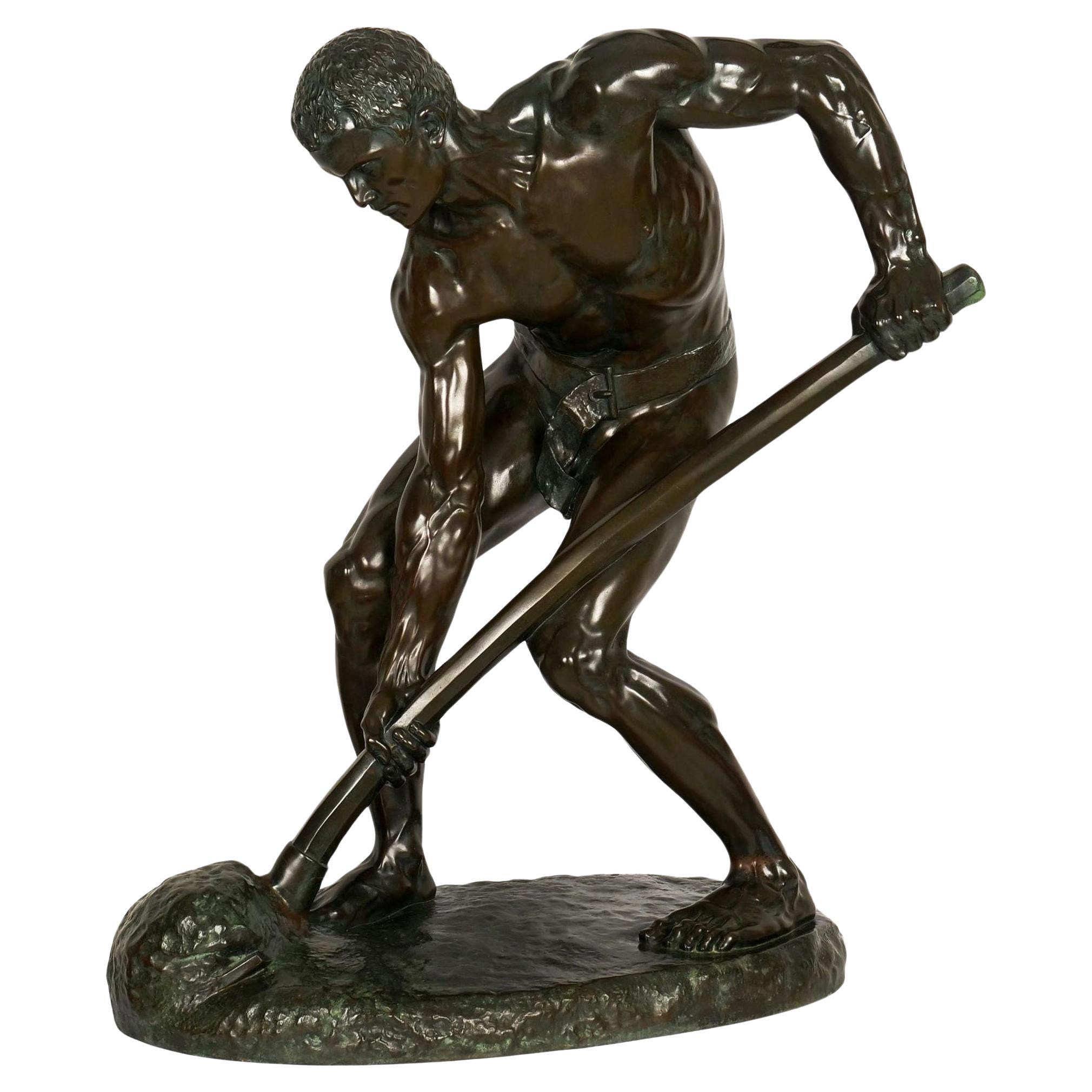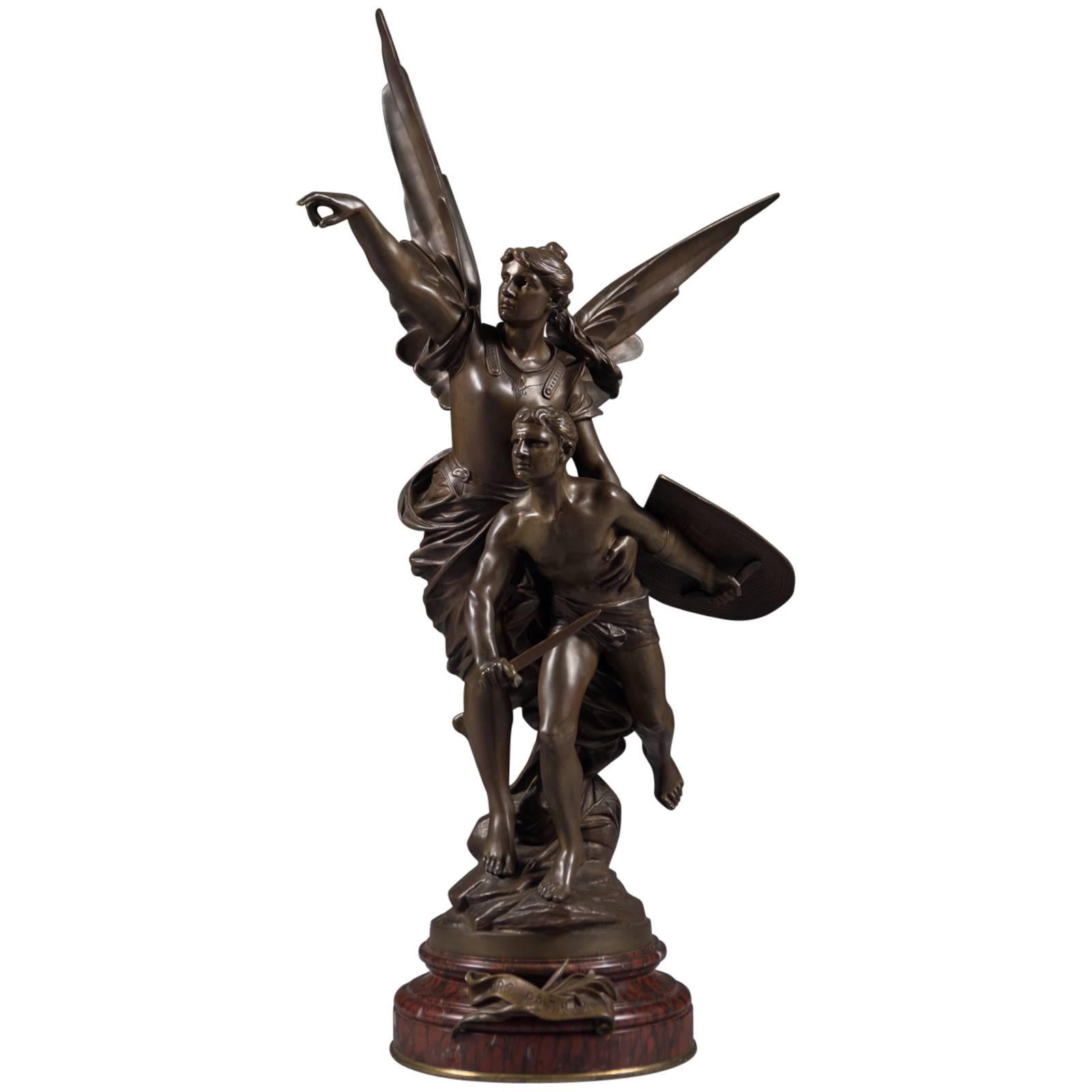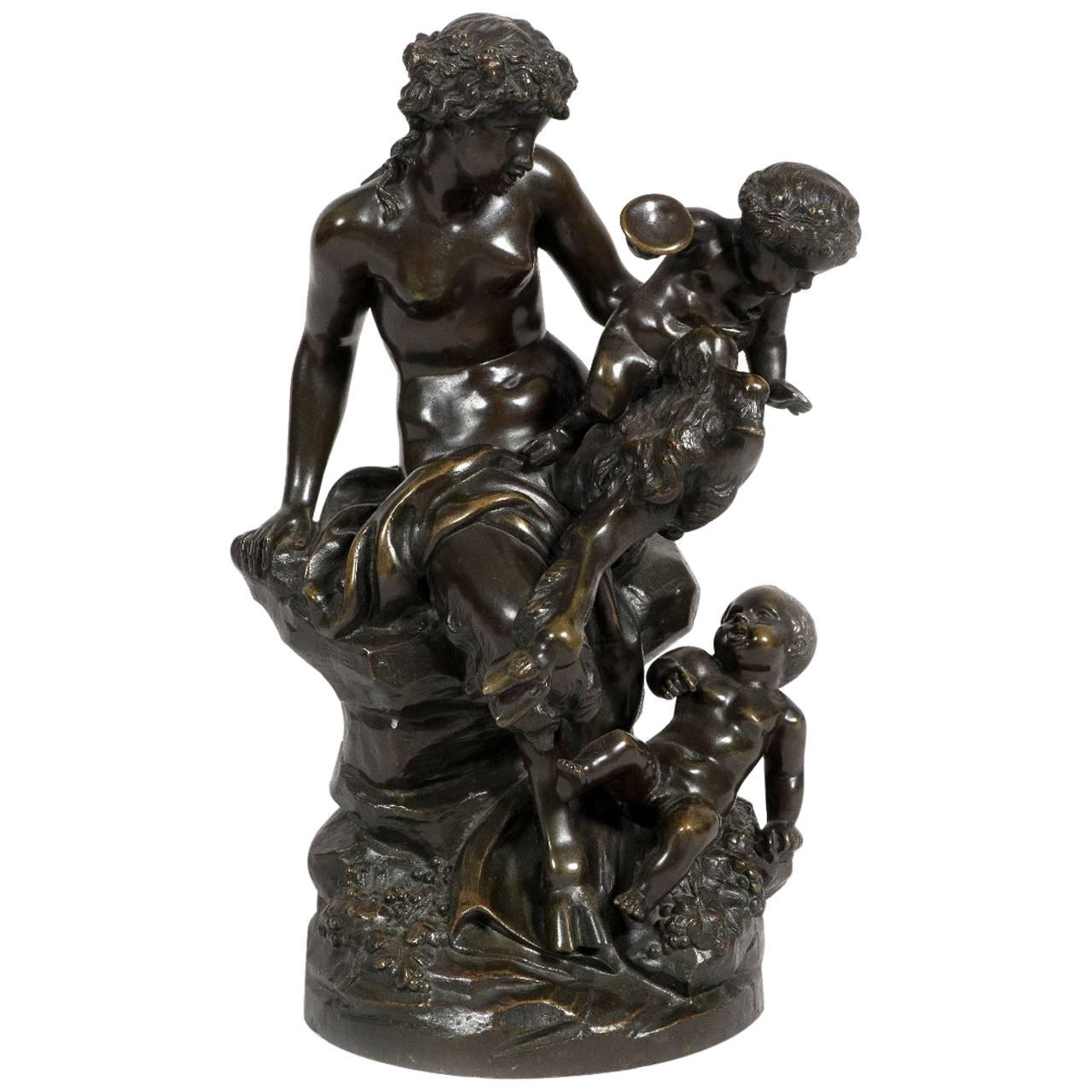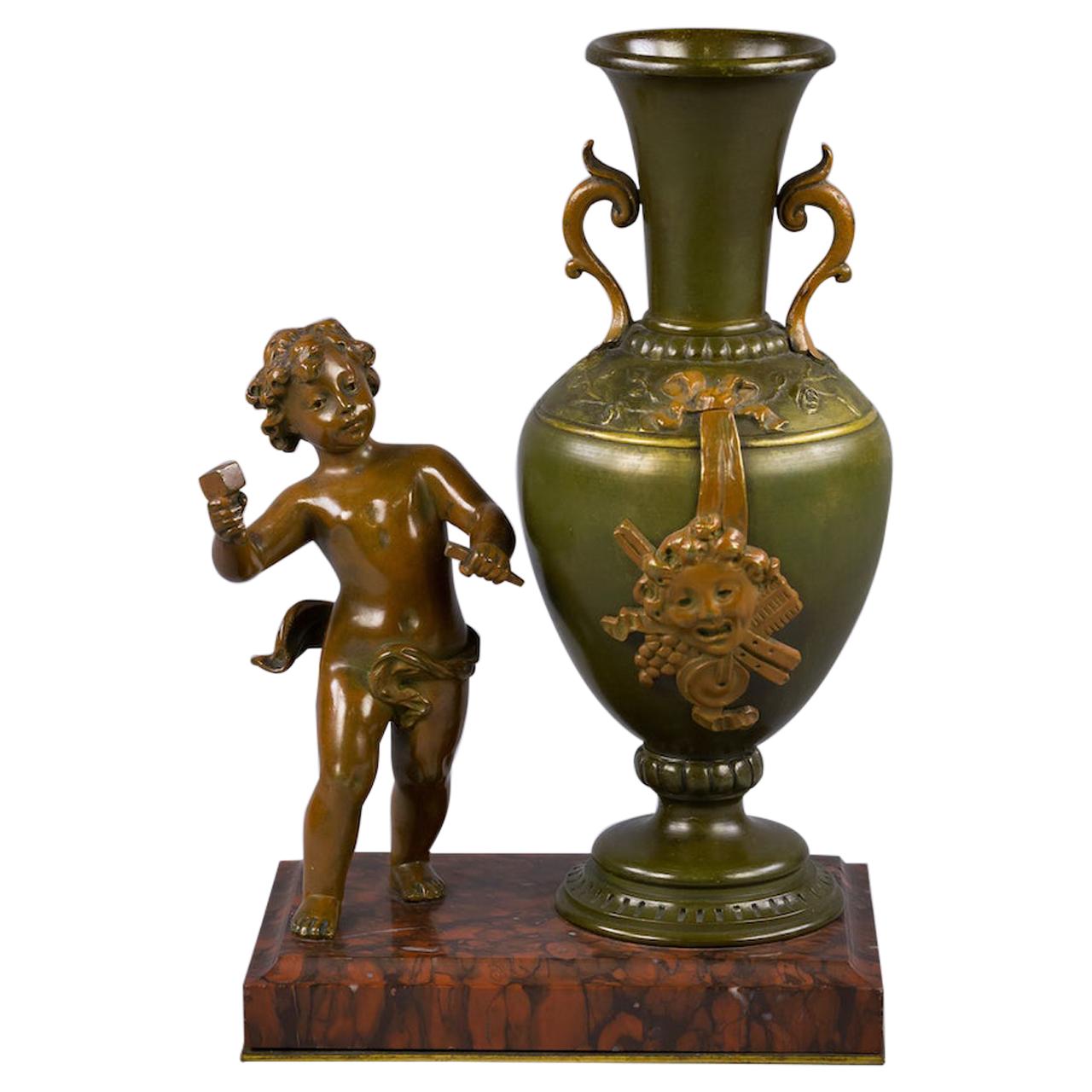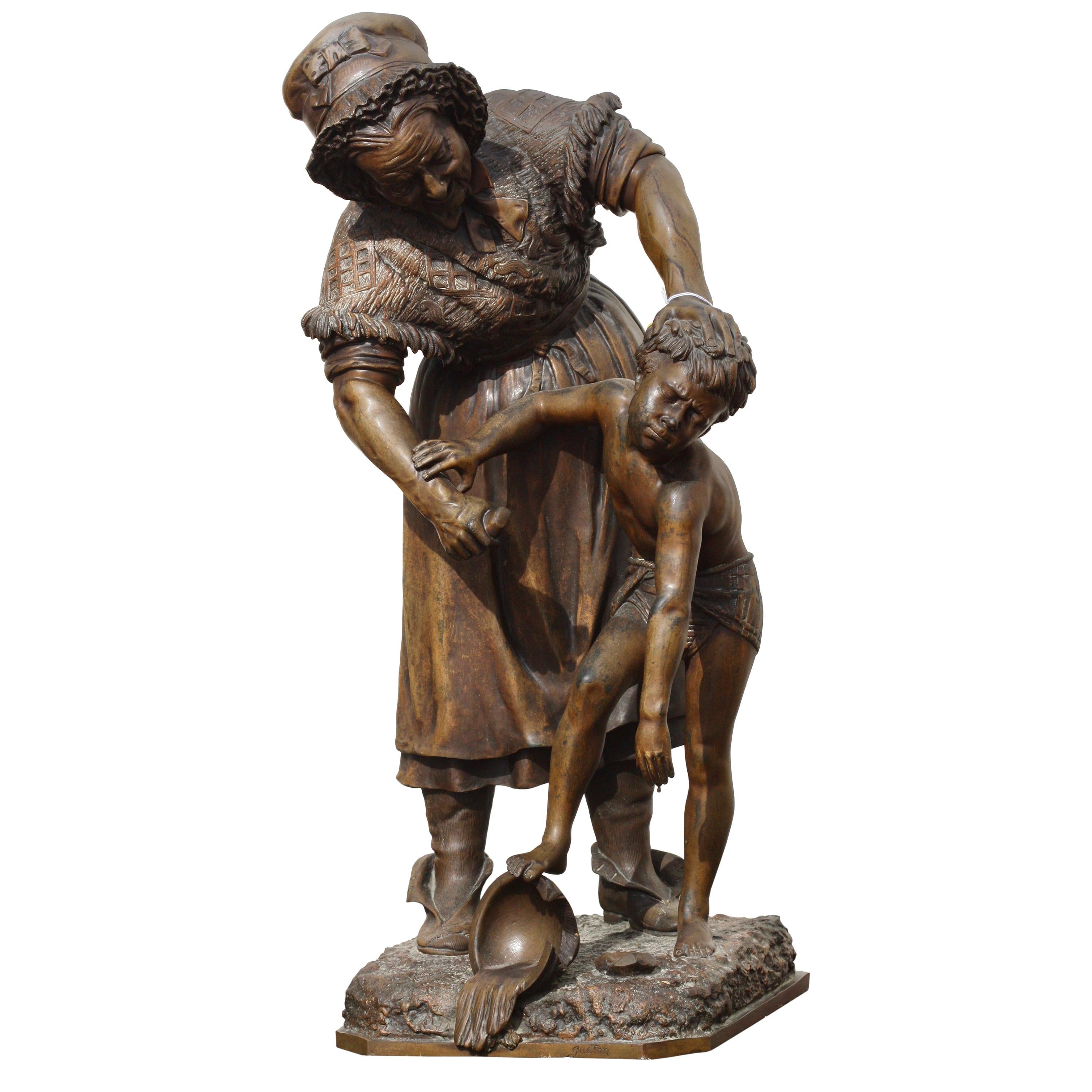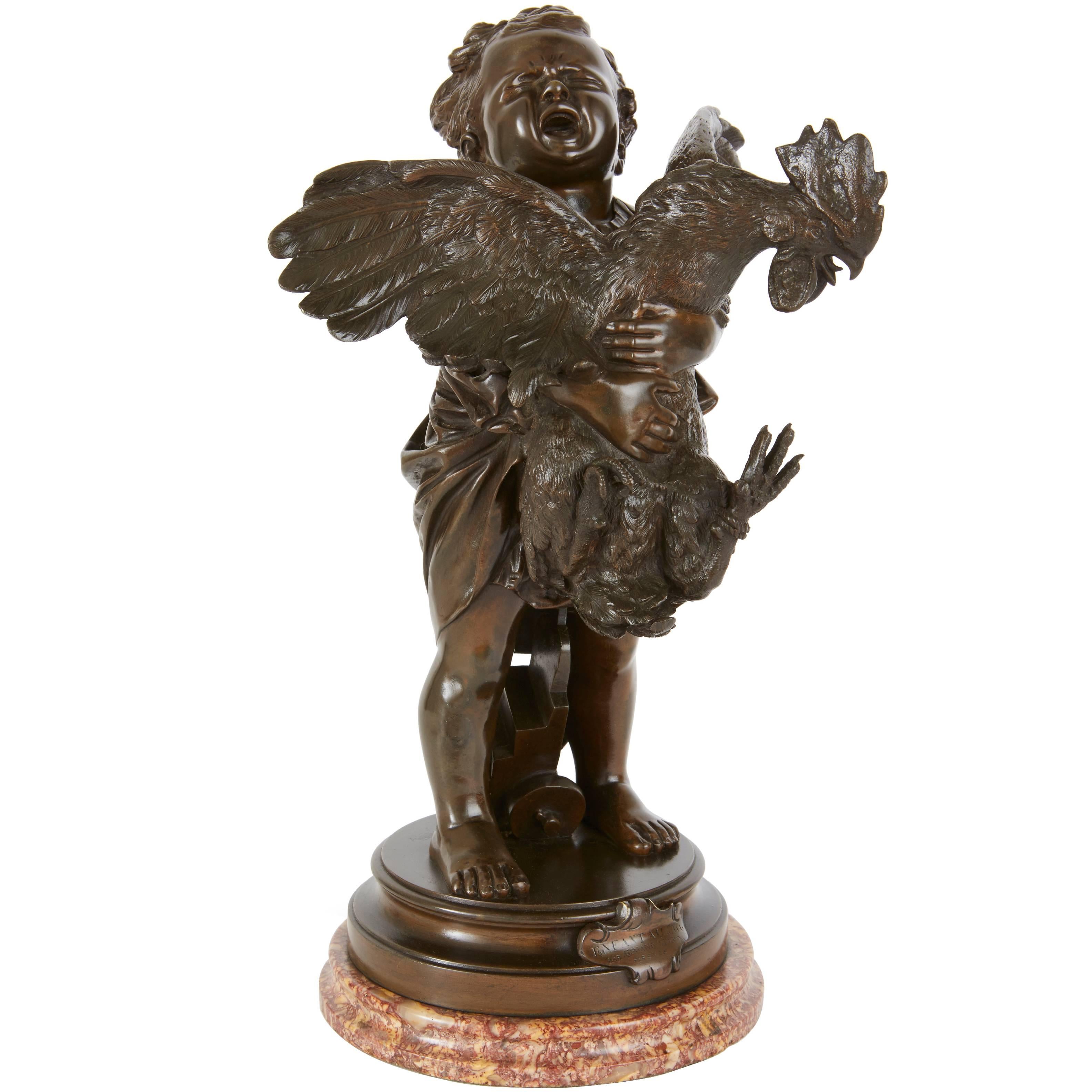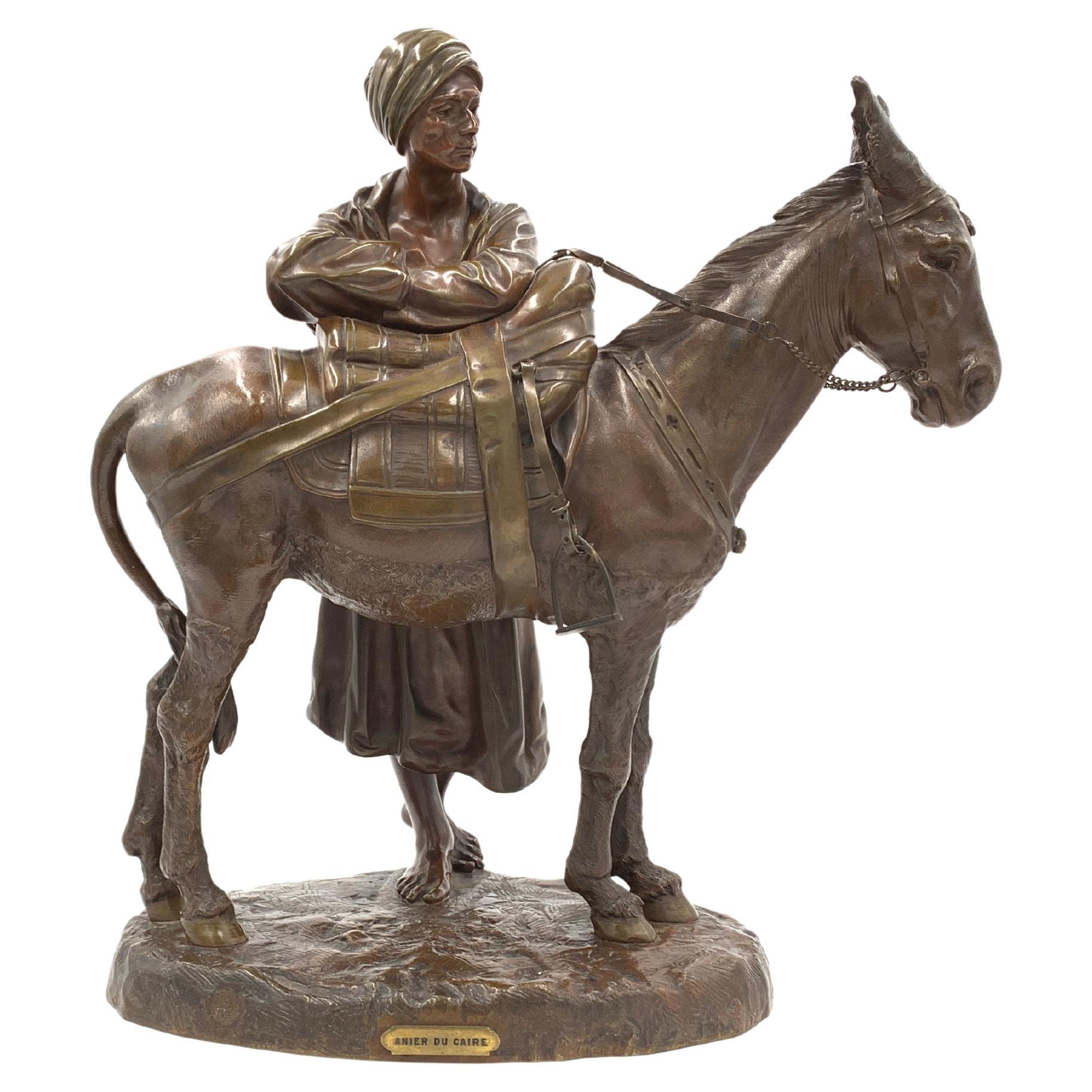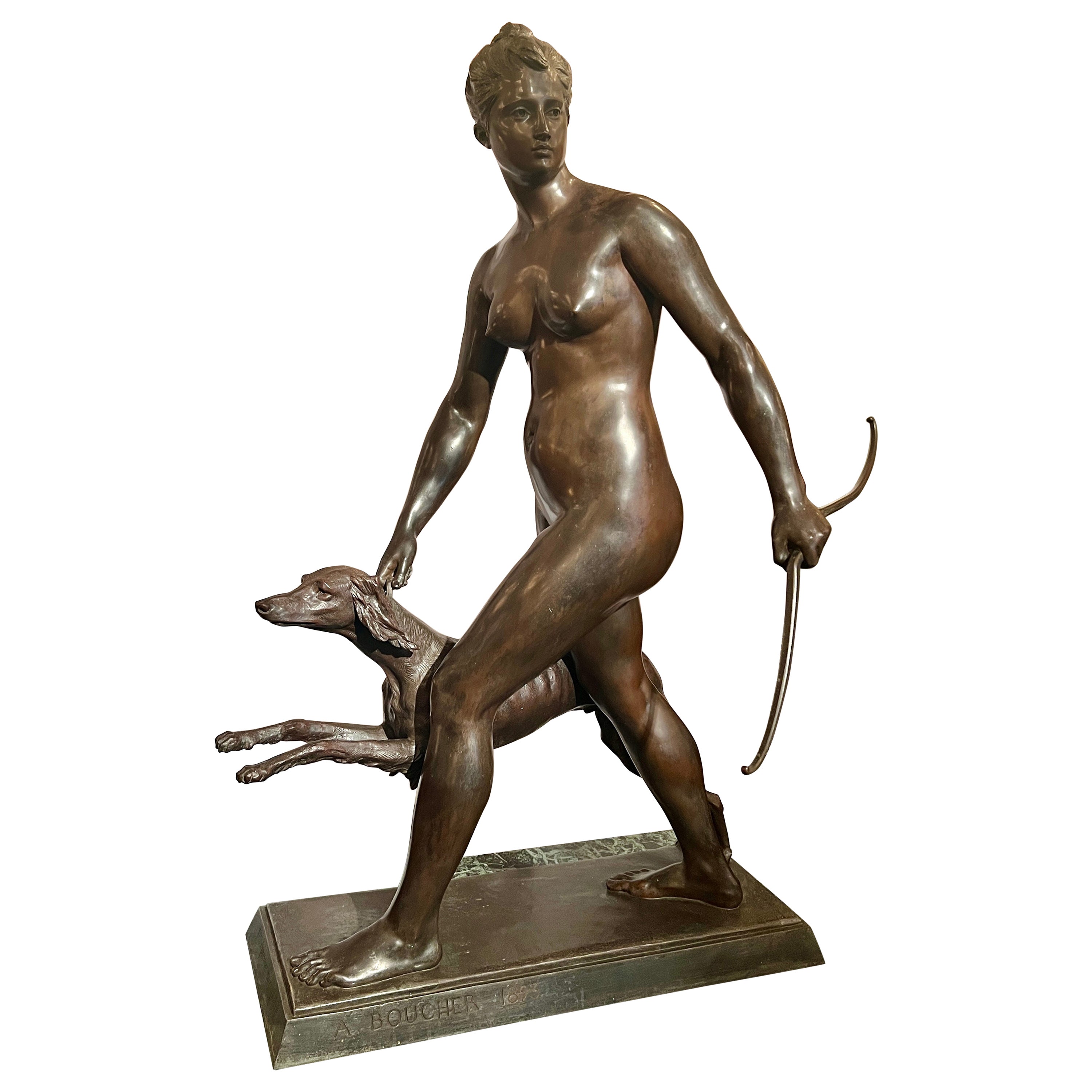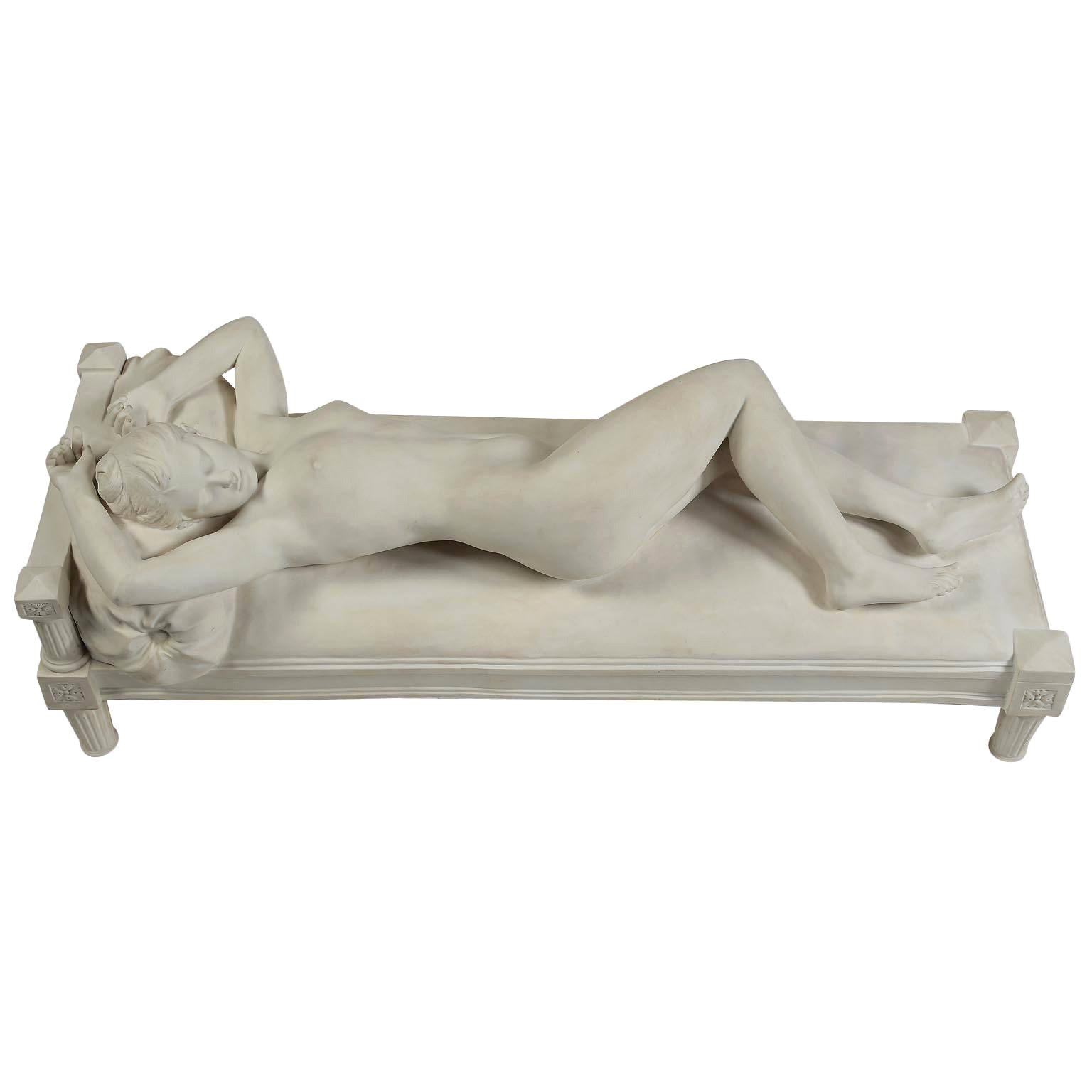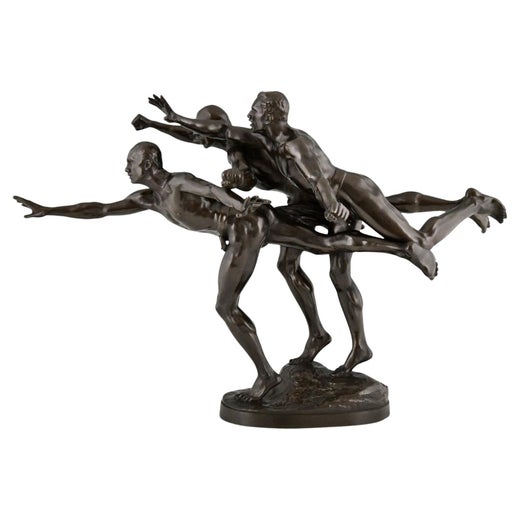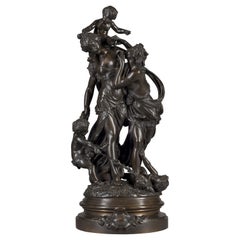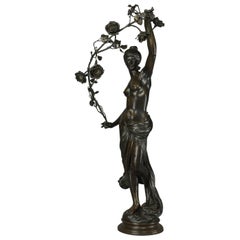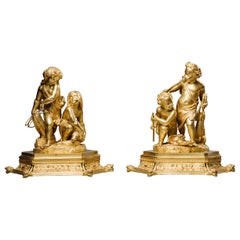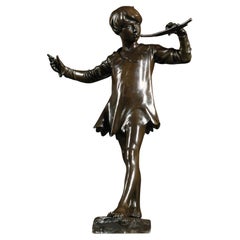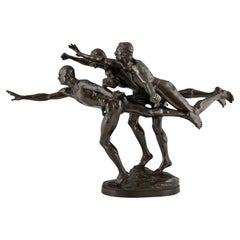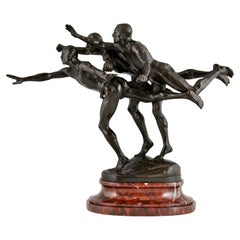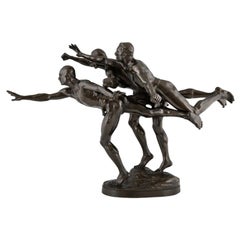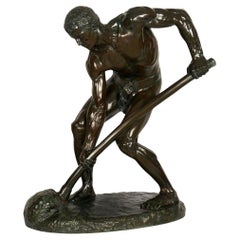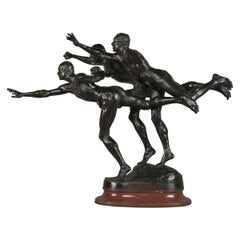
'Au But' a Patinated Bronze Figural Group by Alfred Boucher. French, 1890
View Similar Items
'Au But' a Patinated Bronze Figural Group by Alfred Boucher. French, 1890
About the Item
- Creator:Alfred Boucher (Sculptor)
- Dimensions:Height: 29.14 in (74 cm)Width: 41.34 in (105 cm)Depth: 19.69 in (50 cm)
- Materials and Techniques:
- Place of Origin:
- Period:
- Date of Manufacture:circa 1890
- Condition:Wear consistent with age and use.
- Seller Location:Brighton, GB
- Reference Number:Seller: B731601stDibs: LU1028017019042
Alfred Boucher
The son of a farm worker, Alfred Boucher was born in 1850 in the French commune of Bouy-sur-Orvin and rose to prominence as a prolific, award-winning artist during the late 19th century, producing meticulously detailed sculptures for the likes of royalty and presidents.
When he was young, the Boucher family moved to Nogent-sur-Seine where his father secured gardening work for sculptor Joseph-Marius Ramus. Ramus, who worked in the neoclassical style, saw potential in Boucher. He invited him to work in his studio and helped him get a scholarship to Beaux-Arts de Paris when Boucher was 19 years old.
In Paris, Boucher studied under esteemed sculptors Augustin Dumont and Paul Dubois. He began to develop a unique style characterized by a sense of life, movement and symbolism. While Boucher is known as an academic sculptor, his work usually paid tribute to day laborers — an understandable endeavor given his father’s role as a farmhand.
As his profile grew, Boucher also secured commissions to create busts of prominent figures in the scientific community as well as politicians. The artist became friendly with Auguste Rodin — widely considered the father of modern sculpture — and mentored Laure Coutan and Camille Claudel. Later, in 1902, Boucher founded the low-cost studios La Ruche in Montparnasse to support young artists.
Boucher participated at his first salon in 1874, winning a bronze medal. He later lived in Italy and further honed his skills, and was awarded the Prix du Salon in 1881. He received the Grand Prix at the Exposition Universelle in Paris in 1900.
Boucher was promoted to Grand Officer in the Légion d'Honneur in 1925 and passed away in 1934.
Find original Alfred Boucher sculptures and other art on 1stDibs.
More From This Seller
View AllAntique Late 19th Century French Figurative Sculptures
Bronze
Antique Late 19th Century German Figurative Sculptures
Bronze, Iron
Antique Early 19th Century French Napoleon III Figurative Sculptures
Bronze
Vintage 1910s English Figurative Sculptures
Bronze
Antique 19th Century Italian Figurative Sculptures
Bronze
Early 20th Century Austrian Figurative Sculptures
Bronze
You May Also Like
Antique 1890s French Romantic Figurative Sculptures
Bronze
Antique 1890s French Romantic Figurative Sculptures
Marble, Bronze
Antique 1890s French Other Figurative Sculptures
Bronze
Antique 19th Century French Figurative Sculptures
Bronze
Antique Late 19th Century French Late Victorian Figurative Sculptures
Bronze
Antique 19th Century French Rococo Figurative Sculptures
Bronze
